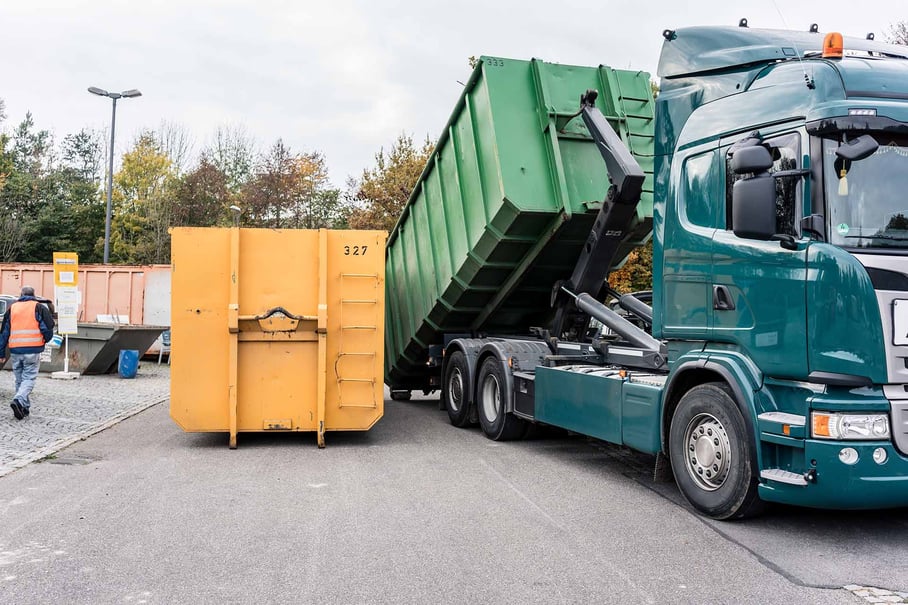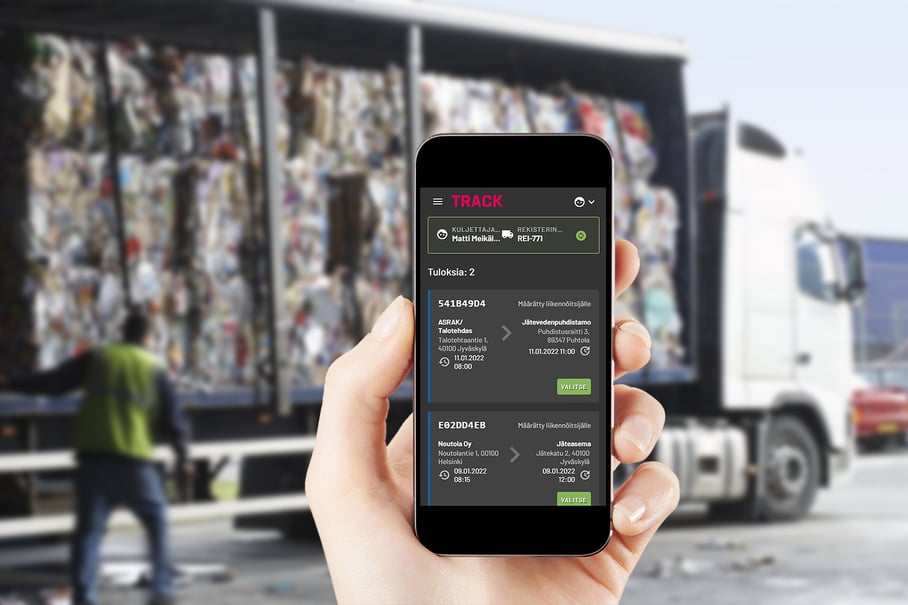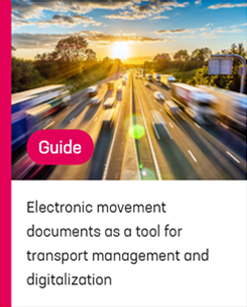
In 2021, a new waste act came into force and the topic has been subject to much debate, both in public and at coffee tables. The new obligations brought changes for the industry, and there are other reforms on the way, too.
The details are starting to become clearer, but there is still confusion in the professional sectors. What is required of operators in the supply chain of waste-derived materials?
The act has required the use of movement documents since 2012, and the obligation to switch to electronic movement documents came into force at the beginning of 2022. The purpose of the movement document is to collect more comprehensive and accurate information on waste for monitoring, control and statistics, and to improve the monitoring of hazardous waste in particular. The electronic movement document beats its paper counterpart, for example in terms of ease of use, traceability and archivability in electronic format.
Paper or electronic movement document?
Many companies in the supply and processing chain still use paper movement documents. Companies are aware of the electronic option, but some have postponed its deployment.
SIIRTO, an electronic movement document register, is estimated to be introduced in fall 2022, where the data of movement documents have to be stored in the future. Information on the above-mentioned movements of waste requiring a movement document is recorded in the register from electronic or paper movement documents of each operator. The official register of waste movement documents, SIIRTO, is maintained by the Finnish Environment Institute (SYKE). Operators are responsible for entering the data of the movement documents in the way that they desire.
At the latest during the implementation phase of the electronic movement document register, it is a significant advantage for the operator to have an electronic movement document application in place that allows automatic data transfer to the register. The authorities also strongly recommend moving to electronic movement documents at this stage.
Two ways to report movement documents to the authorities

Pinja’s digital transfer document service is browser-based and available on a variety of devices, from mobile phones to laptops.
There are two ways to report information on movement documents to the electronic register of authorities:
- Manually, i.e., by manual entry if a paper movement document is used
- Automatically, if an electronic movement document service is connected to the register
Manual entries are laborious and prone to human error. The number of waste transport and reception transactions can be up to thousands per week, and manually entering them into the register takes a lot of time away from more meaningful and productive work. It is estimated that it takes about ten minutes per movement document to enter them manually.
Relying on paper is prone to all kinds of human error and disorder. Paper movement documents are passed from one person to another. They can get lost or end up in an archive until the reporting deadline looms and you have to put in a lot of effort to find them.
Pinja’s electronic movement document service is an advanced solution for the reporting needs of the circular economy sector
Pinja’s electronic movement document is a versatile application developed to meet the growing needs of the circular economy sector to share and report information in a transparent way between transport parties, in addition to meeting new regulatory obligations. The software is built to be simple and easy to use on the road or in the office. It is an electronic movement document service that meets the needs of both individual drivers and large operators.
The flexibility of the system is well demonstrated by the very different use cases of our clients. In its simplest form, drivers can create movement documents on the road using their mobile device. In the most versatile case, movement documents are created based on orders from the client’s ERP system, providing the receiving facility with advance information on incoming loads. In addition to the movement document, the transport completion data can also be automatically updated in the client’s own system.
Clear and straightforward sharing of transport data and reporting to each party involved in the transport is already possible in the basic functionalities of the software. This means that no time is spent on sending documents or reporting to the customer, as the parties involved are given access to the information that concerns them. Our clients use this information for purposes such as billing, site reporting and the annual regulatory report for the environmental permit. Integrations also allow for more versatile use of data, for example through BI tools.
Pinja offers a simple and quick-to-use electronic movement document service, built together with the industry and designed to meet even the smallest needs. As your needs grow, the software can be scaled to meet even the most demanding requirements.
Download a free guide: Electronic movement document as a tool for transport management and digitalization
The new Waste Act of 2021 requires a transition to an electronic movement document. In this guide, we explain the possibilities and benefits of electronic movement documents in more detail, and open up the implications of the new Waste Act for the processing of movement documents. See also Pinja’s electronic movement document service →
Read more
Avoid the pitfalls of reporting in YLVA – pay attention to three things
Automated and agile sustainability reporting
Efficiency and tools for smooth reporting in YLVA
Oulun Energia – circular economy success story
Gasum success story
Guide – Minimize the workflow of reporting in YLVA - benefits of a modern system solution for reporting
Guide – 6 tips for streamlining inbound and outbound operations
Once – Supply chain management system
Flow – A system for improving the efficiency of material flows
Electronic movement document

Petrus Taskinen
I work at Pinja as a Business Manager in the bioenergy and circular economy business. I am responsible for handling commercial matters and maintaining customer relationships. Free time is largely spent with the family. Exercise and especially various ball sports are close to the heart.
Back to the Pinja Blog
Categories
- Career at Pinja (68)
- Manufacturing (48)
- Knowledge Management (45)
- Production Development (44)
- Software Partnership & Tools (42)
- Sustainability (37)
- Wood and Forestry (37)
- Bioenergy and Recycling (27)
- IT Support and Outsourcing (24)
- Ecommerce (23)
- Maintenance (22)
- Artificial Intelligence and Machine Learning (15)
- Public Services (9)
- Compliance (1)
